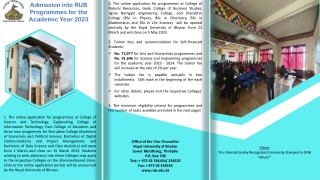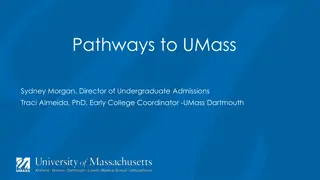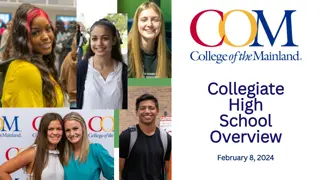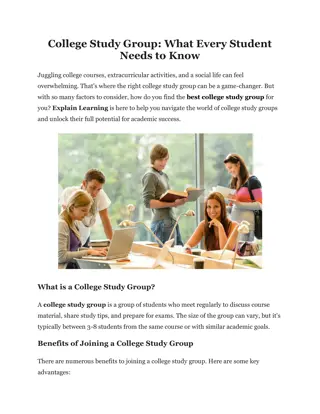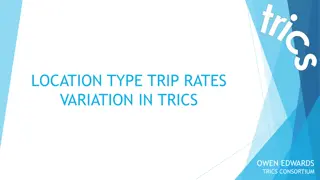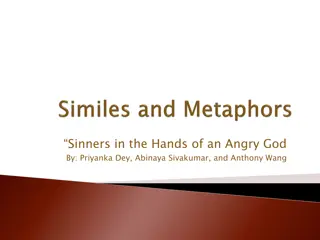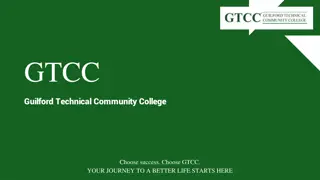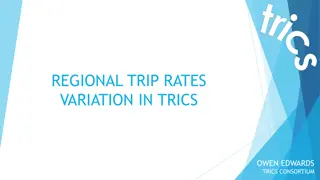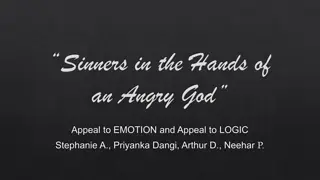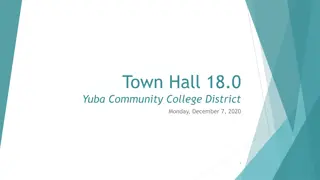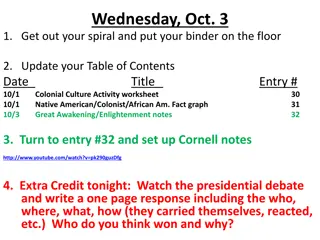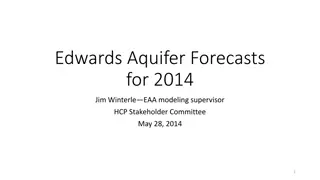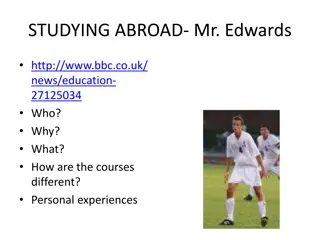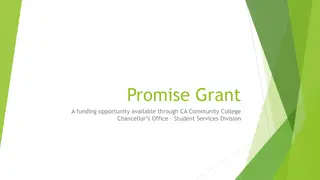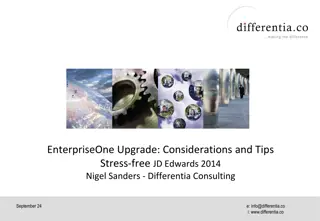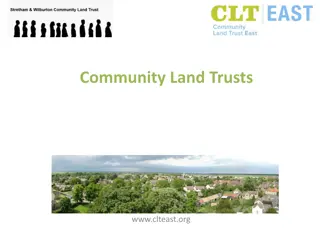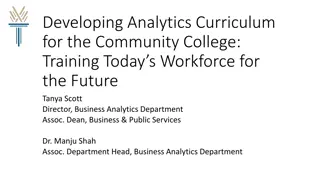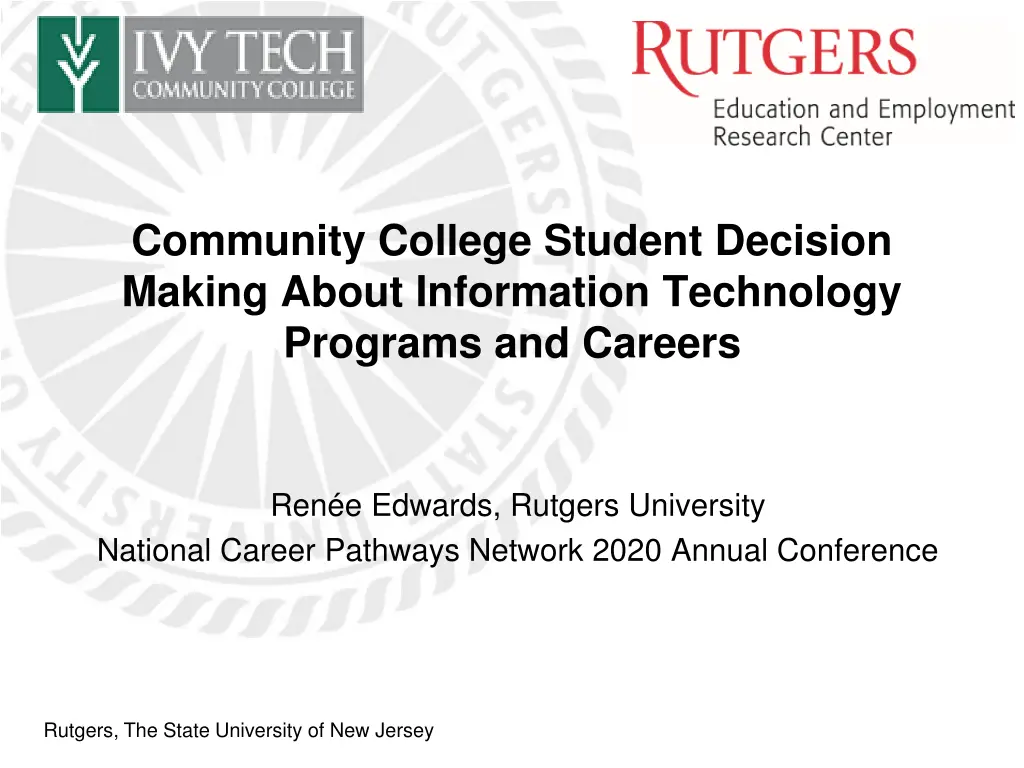
Community College IT Programs and Decision Making
Explore the challenges and importance of informed decision-making for community college students considering Information Technology programs and careers. Understand the factors and theories influencing their decisions to help guide them towards successful pathways in the IT field.
Download Presentation

Please find below an Image/Link to download the presentation.
The content on the website is provided AS IS for your information and personal use only. It may not be sold, licensed, or shared on other websites without obtaining consent from the author. If you encounter any issues during the download, it is possible that the publisher has removed the file from their server.
You are allowed to download the files provided on this website for personal or commercial use, subject to the condition that they are used lawfully. All files are the property of their respective owners.
The content on the website is provided AS IS for your information and personal use only. It may not be sold, licensed, or shared on other websites without obtaining consent from the author.
E N D
Presentation Transcript
Community College Student Decision Making About Information Technology Programs and Careers Ren e Edwards, Rutgers University National Career Pathways Network 2020 Annual Conference Rutgers, The State University of New Jersey
Background and Study Goals
Community College and IT Programs IT programs are attractive to many students because of their job prospects IT has a wide variety of sub-fields, graduation requirements, short-term credentials options, and academic pathways Many options = many opportunities = potential confusion Prior research on IT students shows: Challenges understanding differences across programs Challenges getting adequate advising
Importance of Informed Decisions Informed decisions about technical programs and careers can help boost completion and employment Knowing requirements and getting on track early Motivation to a goal Little is known about how community college students make these decisions
Decision Making Theories Variation in how theories focus on the following: Rational choice versus idiosyncrasy and chance Individual as the locus of decision making versus the social context in which decisions are made Decisions at points in time versus processes of decision making over time Economics, psychology, and sociology each offer perspectives
Factors in Decision Making Skills/ability, Self-efficacy Am I good at it? Can I do it? Outcomes expectations, Earnings ... Will I like the outcomes? Will I earn enough? Enjoyment/interest Do I like it? Self-concept/ Knowledge Is it something for someone like me? What possibilities do I know of for me? Opportunities What actual possibilities exist for me? Family influence What will my family say?
Influences Leading to the Decision Types of influence: Information such as websites and other internet resources from official occupational sources to more informal discussion boards; Use of college resources, internet Experiences internships, jobs, extracurricular activities, research experiences People mentors, faculty, role models
Focus on College Influences Math requirements Transfer requirements Course requirements Advising tools Introductory and early milestone courses General advisors Faculty advisors College social influences (groups, competitions, team activities, etc.)
Research Questions RQ1: How do community college students make the decision to enter technician programs? How do students learn about programs and careers to decide to enter a program? RQ2: What experiences and information influence students decision making about programs and careers in IT? How do college information tools and advising resources influence these decisions, particularly early in students enrollment?
Project Activities Student Surveys 1st semester students to understand their decision-making process about selecting an IT program 3rd semester students to understand their decision-making as well as their experiences navigating programs Survey fielded three times to capture different students; questions added to capture impact of the pandemic on decision-making Student Interviews 40 students from the surveys chosen for in-depth interviews to examine decision making processes about programs and careers; done twice 20 students who have completed or are just about to complete Review of Campus Policy and Practice Interviews with faculty, advisors, administrators
Survey Distribution and N Size 2 survey distributions Distributed to Ivy Tech community college students enrolled in key IT courses conducted in fall term 2018 and spring term 2019 Again in Fall 2019 (updated) Electronic distribution via Qualtrics by faculty to students in in- person versions of IT courses likely to be taken by students in their first or third semester The survey was made available to 2,942 students 690 total students took the survey (23% response rate).
Survey Themes Respondents were asked to: Describe their experience with general advising Describe their experience with faculty advising Explain how they received information about IT programs and careers Discuss their awareness of math requirements Describe how important math requirements are to decision- making Describe what they know about transferring to a 4-year university Describe how important transfer plans are to decision-making
Respondent Information Demographic Information: 67% Male, 68% White Current level education: 66% High School diploma 10% Associate degree 10% GED or not completed HS 8% Bachelor s degree 3% Graduate degree 55% Full-time, 42% Part-time students 83% have selected a program, 14% have not 52% have selected a career, 45% have not 68% Interested in transfer
Educational Goals 68% respondents said they were interested in transferring to a four-year university When asked about their current educational goals, however, only 58% of survey respondents said they wanted a bachelor s degree An equal number of respondents (58%) said their goal was to attain an associate degree (AA or AAS) 33% said they were pursuing an industry certification 43% have only one goal Of those with only one goal, it was most often an associate degree (35%), followed by bachelor s degree (28%)
Educational GoalsEducation Pathways More students (55%) had multiple educational goals Educational pathways were most evident in those who chose industry certification as a goal Those who chose Industry certification as a goal (33%) also chose an AAS or AS (73%) and bachelor s degree (41%) Of those who chose an associate degree (58%), only 18% also chose a bachelor s degree as a goal Of those who chose an AS (26%), 38% also chose a bachelor s degree as a goal Of those who chose an AAS (32%), 26% also chose a bachelor s degree as a goal More students who chose an AS are thinking of pursuing a bachelor s degree than those who chose an AAS
Knowledge of Programs Computer science and cyber security are the most recognized programs 73% Software development and informatics both 68% Information technology support 60% Database management 51% Network infrastructure 47% Server administration 45% Visual communication 25%
Program/Career Selection Program Selection: 83% Have selected a program 20% Have switched programs at some point Of those who switched: 15% were previously in Computer Science Career Selection: 52% of respondents indicated they have chosen a career
Course Requirements Importance of Knowing Course Requirements When Selecting a Program: 91% indicated course requirements are important or very important in program selection However, 31% indicated they either did not know the math requirements for their program or were unsure if they knew them 48% indicated they would have to take Developmental Math (27%) or were unsure if they would have to (21%) 32% were not sure what level of math they intended to take 51% were concerned about the math requirements for their program
Advising Percentage of Respondents by Number of Times Have Seen Advisor Number of Visits Advisor 4+ 19% 2-3 49% 1 20% None 9% General Faculty Advisor 18% 32% 21% 25%
Transfer pathways 33% of students felt the ability to transfer would/did influence their program decision, and 19% were unsure if it would Only 28% of students were aware of TSAP as a transfer pathway 15% were aware of WGU as a transfer pathway 9% were aware of Trine as a transfer pathway Students were asked which programs would transfer to a bachelor s degree: CSCI 52% CSIA 51% SDEV 48% INFM 33% ITSP 33% DBMS 31% SVAD 29% VISC 20%
Where Students Find InfoPrograms College Website (53%) General Advisors (44%) Instructors (28%) Family/Friends (21%) Other students (13%) Other (10%)
Where Student Find InfoCareers Google (52%) College Website (41%) Instructors (36%) Advisors (34%) Family/Friends (19%) Other students (11%) Other (7%)
Information Needs After advising, students felt they still needed information about: The skills required in different jobs/careers (48%) Specific jobs/careers associated with programs (46%) How to transfer to a four-year college (45%) Earnings associated with jobs/careers (41%) Best classes to take together (38%) Difference between the IT programs (37%) Math requirements (29%)
Introductory Courses How did intro courses influence thinking about selecting an IT program? Helped learn strengths & weakness in IT (51%) Make aware of what like/don t about IT (44%) Learned about program options (44%) Gave information they did not have about program requirements, time to graduation, math requirements, etc. (34%) They have not influence program choice (15%) Helped decide to enter a non-IT program (8%)
Introductory Courses How did intro courses influence thinking about IT careers? Made aware of specific careers/jobs associated with different programs (41%) Helped learn which jobs/careers might be best at (39%) Helped learn about careers did not know about (34%) Gave info about careers (salary, job types) did not have previously (34%) Did not influence career decisions at all (21%) Helped decided to enter a non-IT career field (9%)
Campus Practice Reviews Policy reviews done by Ivy Tech faculty collaborators 3 collaborators, visited 6 campuses each, total of 18 campuses In-depth semi-structured interviews, 2-3 interviews/campus Total of 42 interviews Policy review topics: Campus advising model Role of faculty Role of advisors Students Outreach/marketing 8-week/16-week courses Preliminary analysis of 6 campuses
Campus Practice ReviewsAdvising Model Small campus 1: Gentle intrusion advising Medium campus 1: Major evaluated by faculty and student in/out of classroom; Who student sees in Yr. 2 determined by students relationship with faculty/advisor, strong communication between advisor and faculty, faculty get a phone call from advisor when busy to advise students Medium campus 2: Mentorship model; academic advisors 0- 60 credits. Builds relationship over time with students. Advisors feel they must direct students to involve faculty
Campus Practice ReviewsAdvising Model Continued Large campus 1: Advisor and faculty share; advisor believes faculty are advising students but only faculty Chair advising Large campus 2: IT advisor sees student first unless high registration (then faculty pull out of line), IT advisor sees student 0-60 credit hours Large campus 3: Very coordinated, work as a team, advisors and full-time faculty work together, offices close in proximity, coordinate with each other. Students getting program and career information from beginning
Campus Practice ReviewsRole of Advisor Small campus 1: Advisor sees role as pre-filter of program selection Medium campus 1: Advise students initially, students work with faculty after that, faculty continue advising unless student has better relationship with advisor Medium campus 2: Holistic approach to advising. Encourage students to make appointments with faculty but student sees advisor 0-60 credits. Monthly meetings with faculty Large campus 1: Students see either faculty OR advisor first, students see both if interested in IT Large campus 2: IT advisor sees students 0-60 credits; advise for complete degree Large campus 3: Both advisors and faculty see students 0- 60; work closely, great communication
Campus Practice ReviewsRole of Faculty in Advising Small campus 1: Full-time faculty work hand-in-hand with IT advisor Medium campus 1: Get to know students in the classroom; help them make major and career decisions Medium campus 2: Meet with students when make an appointment or see in classroom Large campus 1: Chair heavily involved in faculty advising; rest of faculty see students in classroom & advise if asked by student Large campus 2: Faculty spend as much time advising students as possible re: career choice; faculty and advisors have different views of faculty advising Large campus 3: Full-time faculty work as team with advisors
Campus Practice ReviewsStudent Knowledge Small campus 1: Non-trad students more knowledgeable; CSCI default; Gamer phenomenon Medium campus 1: Not sure students understand programs they are in and careers they are going into; CSCI default Medium campus 2: CSCI default; not sure students understand program they re in & careers going into Large campus 1: 50% students knowledgeable; students not getting into intro courses in 1st semester; CSCI default Large campus 2: Students do not know what to ask; 1st gen preparedness is not there; CSCI default; Students are salary- focused; No clear understanding of career paths Large campus 3: Students focused on salary; Non-trad students more knowledgeable about programs
Campus Practice ReviewsOutreach Small campus 1: HS/MS camps demonstrations of concepts relative to IT, general outreach re: IT Large campus 1: Most faculty not engaged in outreach. Career day; Chair does HS outreach; computer club wins competitions press Large campus 3: Large amount of outreach competitions; summer bootcamps; Air force; 4-year schools; cyber security scholarships for females; women in IT and Cyber security clubs; local businesses; national competitions; bootcamps Other campuses similar
Campus Practice Review Observations Structural obligations put on faculty and general advisors may determine the relationship between them. Level of interaction is key in successful advising, but campus size & density factors into how relationship functions administratively Administrative issues such as scheduling, HS requirements for dual-credit students, and over-loading of credit hours can complicate dissemination of 8-week courses, adding to other complications such as student time management and pacing Transfer program misinformation and misunderstanding by students of CSCI is pervasive across campuses Outreach generally done by faculty
Next Steps Continued policy reviews Continued survey distribution (with the addition of pandemic questions) Additional interviews for pandemic-related decision-making issues Continued analysis of interviews Case studies
Q&A/Discussion Thoughts? Questions?
Contact Information Ren e D. Edwards Senior Researcher, EERC 848-445-4719 r.edwards@rutgers.edu


